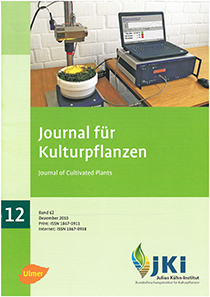Assessment of the biogas production potential of renewable resources with near infrared spectroscopy
DOI:
https://doi.org/10.5073/JfK.2010.12.03Keywords:
Methane yield, NIRS, biogas production potential, fermentable organic matter, renewable resourcesAbstract
The increasing use of biomass for biogas production requires the development of appropriate analytical processes with which the potential gas yields of the plants used can be evaluated. Particularly in energy plant breeding, quick methods to determine genotypical differences in gas development potential are needed that can be applied on large sample series as close to harvest time as possible and at as low a cost as possible. The suitability of near infrared spectroscopy (NIRS) for this task was studied on silage maize, grass and grass-legume mixtures. The calibration-validation experiments were carried out on fresh and accordingly dried, ground samples, as well as on the basis of two reference data bases on methane yield, one calculated from batch tests and the other calculating potential methane yield on the basis of the fermentable organic dry matter. It is shown that the measured methane yield cannot be calibrated or validated with adequate certainty. The reason for this is the inexactness in the repetitions of the batch tests in relation to the crop type specific variance of the methane production potential. With the reference data on the calculated potential methane yield, in contrast, the NIR calibration/validation can be made with adequate exactness. Here the prediction ability lies within the screening area for fresh plant material and an acceptable level of laboratory analysis for dry material is possible.
Downloads
Published
Issue
Section
License
The content of the journal is licensed under the Creative Commons Attribution 4.0 License. Any user is free to share and adapt (remix, transform, build upon) the content as long as the original publication is attributed (authors, title, year, journal, issue, pages).
The copyright of the published work remains with the authors. The authors grant the Journal of Cultivated Plants, the Julius Kühn-Institut and the OpenAgrar repository the non-exclusive right to distribute and exploit the work.







